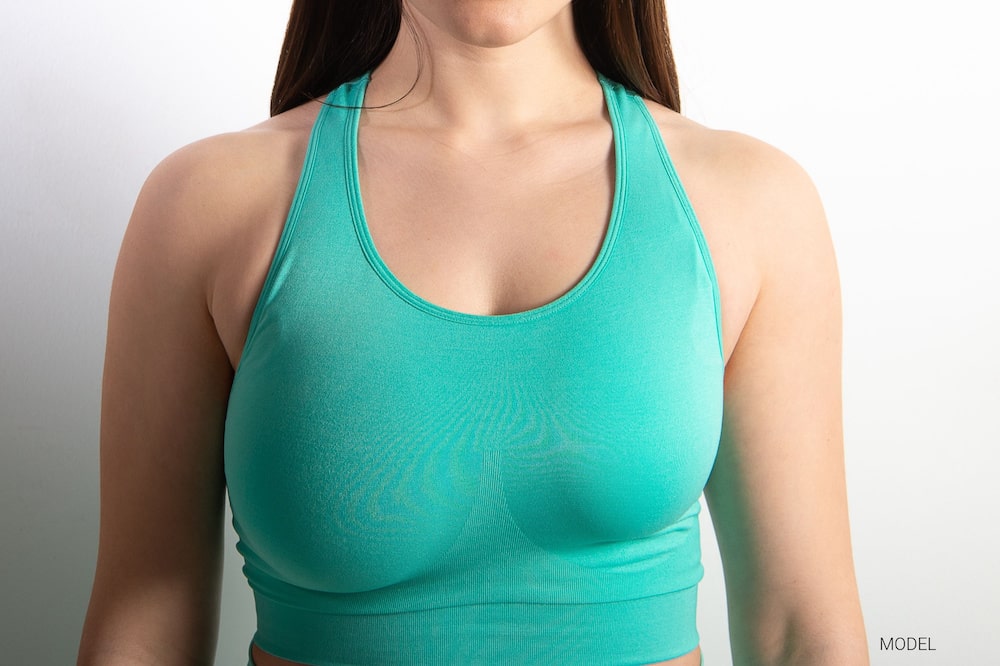Does Breast Revision Require Implant Removal?
4 Minute Read:
Since 2006, breast augmentation has consistently ranked among the top five most requested cosmetic procedures performed each year. While most women are satisfied with their breast augmentation results, a small percentage may experience complications that require an implant revision.

Below, we explore some of the reasons why you may need breast implant revision surgery, how the revisions are performed, and whether they require breast implant removal.
The Three Cs of Breast Revision Surgery
When you undergo breast augmentation, your surgeon creates a pocket for the implant. Depending on what you and your surgeon have decided, the pocket may be subglandular (under the skin) or submuscular (under the chest muscle).
Once the implant is placed, your system recognizes it as a foreign body and begins to form scar tissue around it. This is known as the capsule. Most breast revision surgeries focus on issues with the capsule and generally fall under the following three categories:
Capsulotomy
This procedure involves releasing the scar tissue in your breasts, typically by placing an incision in the capsule. The incision opens the capsule, releasing pressure from the constricting scar tissue.
Capsulectomy
During a capsulectomy, your surgeon removes the breast implant and part or all of the scar tissue capsule around the implant. They will then replace the implant with a new one.
Capsulorrhaphy
A capsulorrhaphy is performed to tighten and recontour a breast pocket that may have stretched, developed a tear, or is otherwise too big for the implants. It adds support to the implants and repositions them into the proper spot.
Reason 1 for Implant Revision: Capsular Contracture
Capsular contracture occurs when the scar tissue around the implants hardens and begins to constrict the implant. In most breast augmentations, the scar tissue is thin and pliable and doesn’t cause any issues with your breast implants. In fact, the capsule actually helps keep your breast implants in the correct place.
After augmentation, your breasts should feel soft and natural, but with capsular contracture, your breasts feel hard, cause pain, and look misshapen.
About one in six patients experience some degree of capsular contracture after breast augmentation, making it one of the most common complications.
Capsular contracture is treated using a capsulotomy or capsulectomy, depending on the severity of the problem. It requires implant removal.
Reason 2 for Implant Revision: Bottoming Out
Bottoming out occurs when your breast implants sink below your inframammary fold — the line where your breast meets your chest. Symptoms include loss of volume in the upper part of your breasts, unnatural nipple position, breast asymmetry, or bulging in the bottom section of your breasts.
Bottoming out typically occurs when the implant is too big for the breast pocket, which increases the pressure on the inframammary fold. It can also happen if the skin and tissue of your chest aren’t strong enough to hold the implant’s weight.
Capsulorrhaphy, reconstruction of the inframammary crease, and replacing and repositioning your breast implants are all ways of addressing this issue. It requires implant removal.
Reason 3 for Implant Revision: Double Bubble Deformity
When you first get breast implants, they sit higher on your chest than your natural breasts would. This is due to tightness in your muscles and skin and will resolve in three to six months as the tissue stretches out and your implants descend into a more natural position.
A double bubble deformity occurs in two ways:
- When your breast tissue is lax and descends instead of the implant
- Your implant drops below your natural inframammary fold
In both cases, you’ll have a second bulge, or “bubble,” below the fold.
The treatment method depends on which type of double bubble deformity you have. Capsulorrhaphy can reposition the implant into its proper place, and a breast lift will eliminate the excess sagging skin. It requires implant removal.
Reason 4 for Implant Revision: Implant Malposition
Issues with the position of your implant, known as implant malposition, occur when your breast implants move within the breast pocket, making them ride too high or too low, fall to the side, or otherwise shift.
This causes your breasts to look and feel unnatural and may even be painful. It can occur due to capsular contracture, trauma to the chest, implants being too large, and incorrect creation of the breast implant pocket.
Types of malposition include high (where the breasts sit too high on the chest), lateral (where the breasts move towards the sides of your chest), low (where the breasts bottom out), and symmastia (where the breasts form a “uni-boob” in the middle of your chest).
Treatment depends on the type of malpositioning you have and can include capsulotomy, capsulectomy, or capsulorrhaphy. Some cases require implant removal, while others may not.
Learn More About Breast Revision in Orange County
If you’re experiencing issues with your breast implants, it’s time to see Dr. Allen Doezie at Mission Plastic Surgery & Aesthetics. His skills, expertise in breast revision surgery, and commitment to treating every patient with care and compassion make him the superior choice for plastic surgery in Orange County.
For more information or to schedule a consultation, call today at 949-481-9850 or fill out our online contact form.
